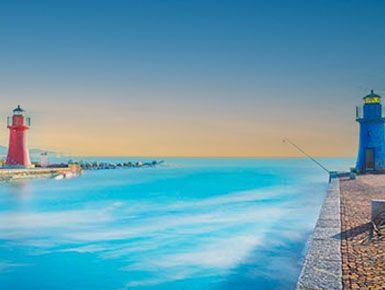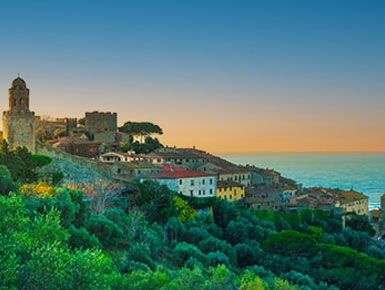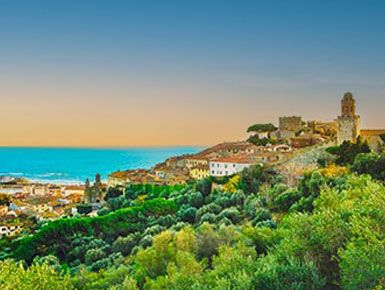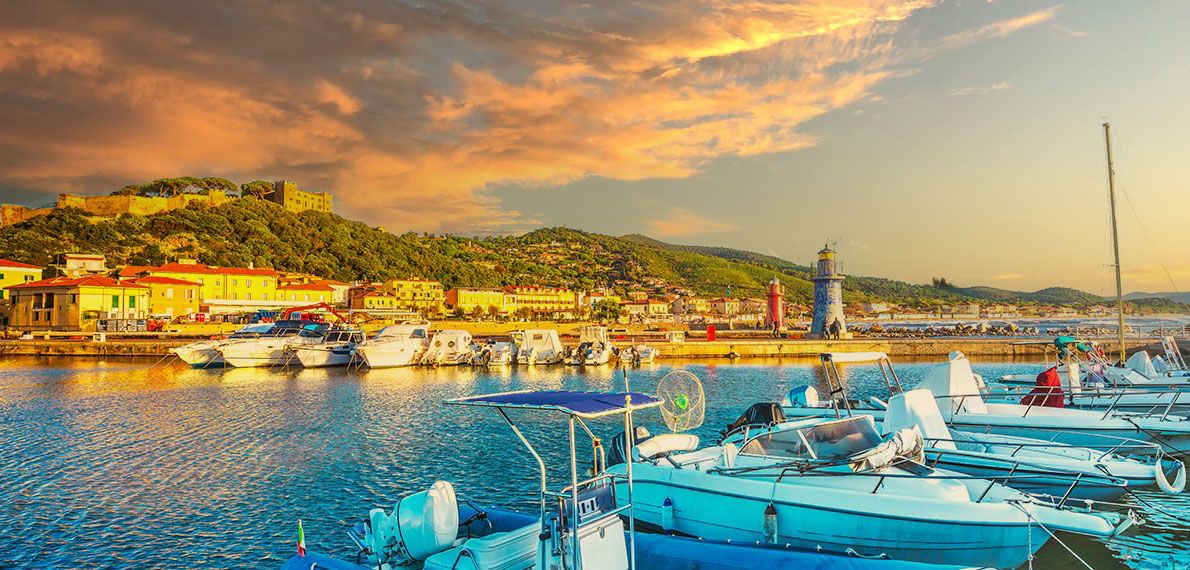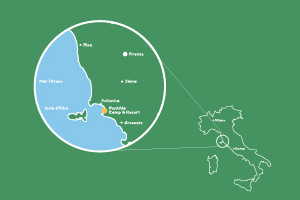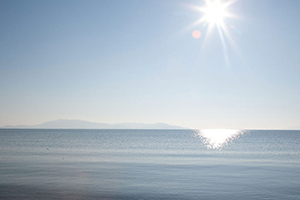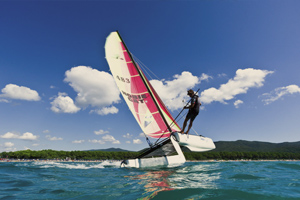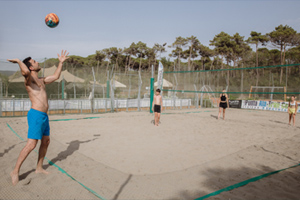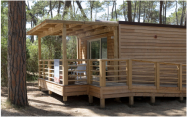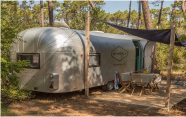Castiglione della Pescaia
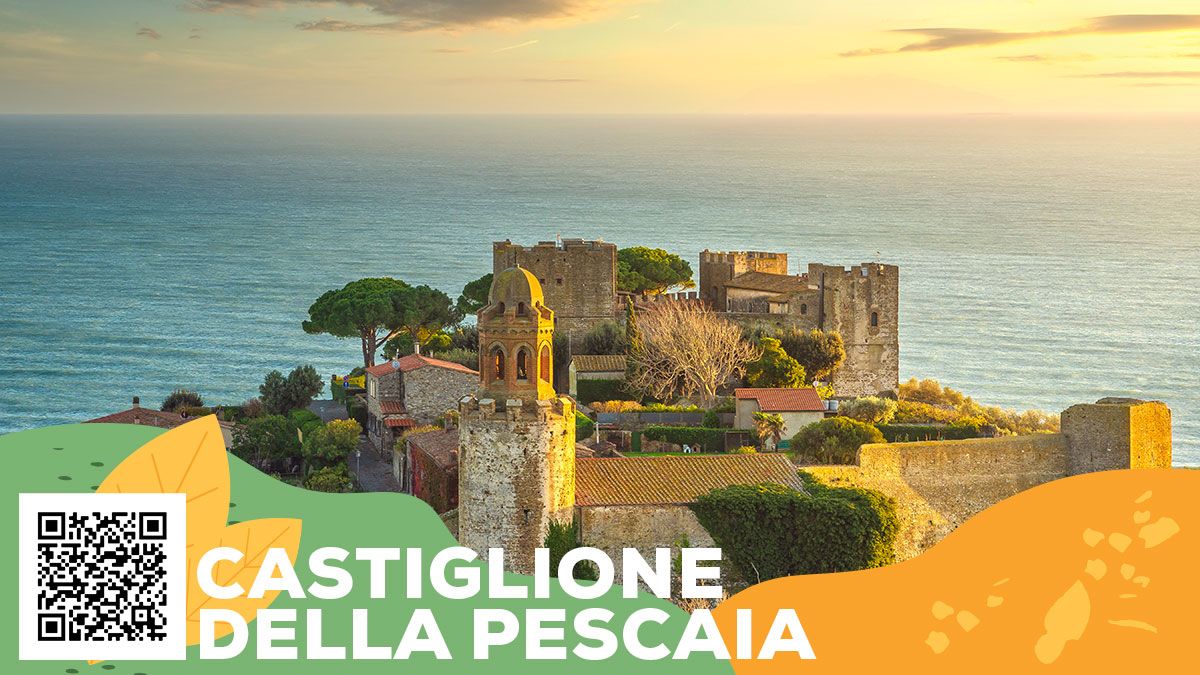
Castiglione della Pescaia, the pearl of Tuscan resorts
Castiglione della Pescaia is a municipality in the northern part of Maremma, in the central areas of Tuscany. It’s exactly one of the main summer resorts, often visited by international and Italian visitors, who appreciate the sea, beaches, and views. The municipality of Castiglione della Pescaia is a town of 8,500 citizens, located just 22 km from the city of Grosseto, awarded in 2005, as well as in 2014, 2015, and 2016 with the 5 Sails of Legambiente, and identified as one of the main visiting destinations by Legambiente and Touring Club, also referred to as the “Switzerland of the Maremma”. The town has experienced great growth during the 1800s and 1700s.
Where to stay in Castiglione della Pescaia
There are numerous accommodations in Castiglione della Pescaia, from resorts to agritourism locations, from b and bs, to houses, and even sumptuous suites for rent. Many facilities surround the town, offering spectacular views. The proposals are varied, but also reliable. Below is a reason why Castiglione della Pescaia is always at the top to win Legambiente’s 5 Sails.
History of Castiglione della Pescaia
The origins of the town of Castiglione della Pescaia date back to the Roman period, as confirmed by some findings discovered along the banks of the Bruna River. In particular, the ruins of the ancient Roman villa of Paduline. The community belonged to the Aldobrandeschi family, after which it came under the control of the Monks of the Abbey of San Salvatore, the Lambardi, the city of Pisa, the Republic of Siena, and finally - the Grand Duchy of Tuscany, with the worthy Dè Medici family.
There are several structures and monoliths in the Tuscan town, signs and evidence of the past and history of this region. Among the main, are certainly the Ximenes Red House, from the beginning of the Renaissance, the Praetorian Palace, the Church of Santa Maria del Giglio, and the Church of St. John the Baptist.
Nautical information about Castiglione della Pescaia, and the Tuscan Archipelago Area
This town is surrounded by a harbor, and part of it is used by cruise boats for excursions to the Tuscan islands. Thanks to the organization of brokers and professionals in the sector, Castiglione della Pescaia has become a very popular seaside resort, where it’s possible to rent private boats to reach the most picturesque places in the Argentario, and the Archipelago.
The sea of Castiglione della Pescaia
The sea, for starters: so clean and tidy that it has been awarded by Legambiente. It has a hue so vivid, so turquoise, that it has earned this area the label “Little Switzerland”. Between the Spiaggia di Levante, Spiaggia di Ponente, and Punta Ala, whose elegance has made it a favorite spot for a number of enthusiasts, visitors to this Tuscan municipality are spoiled by choice as to which shoreline and bathing establishment to dip their feet into the sand of, and enjoy the incredible view of a crystal-clear sea and bright skies. On the best days you can see the island of Elba, and even Sardinia in the distance. A harbor-canal graces the town, while carefully leads the eye from the historic structure in the direction of the open sea.
Historical and natural routes in Castiglione della Pescaia
Castiglione della Pescaia’s ancient history makes it an area rich in archaeological trails: there are traces of life dating back to the Upper Paleolithic, but it’s mainly the exploration of remnants of the Etruscan duration that captures interest, with really special necropolis – the alleged 'circle tombs,' unexpectedly found in the area. There are additionally 2 tombs dating back to the seventh century B.C., the Pietrera burial place, and the symptomatic stone paintings in the basement.
Castiglione della Pescaia still retains traces of its past as a Roman settlement, and among all of them one of the most incredible is the Roman lease of the Paduline, a sumptuous structure built on the best side of the Bruna River around the 3rd century. Thanks to precise excavations, several artifacts, and even frescoes and mosaics from the past have been recovered.
Map of Castiglione della Pescaia
